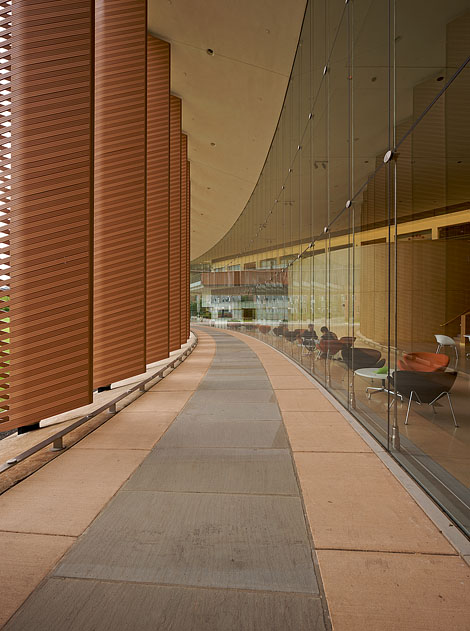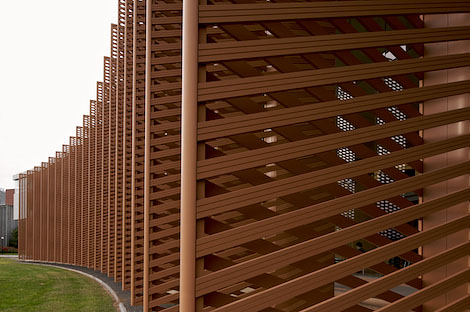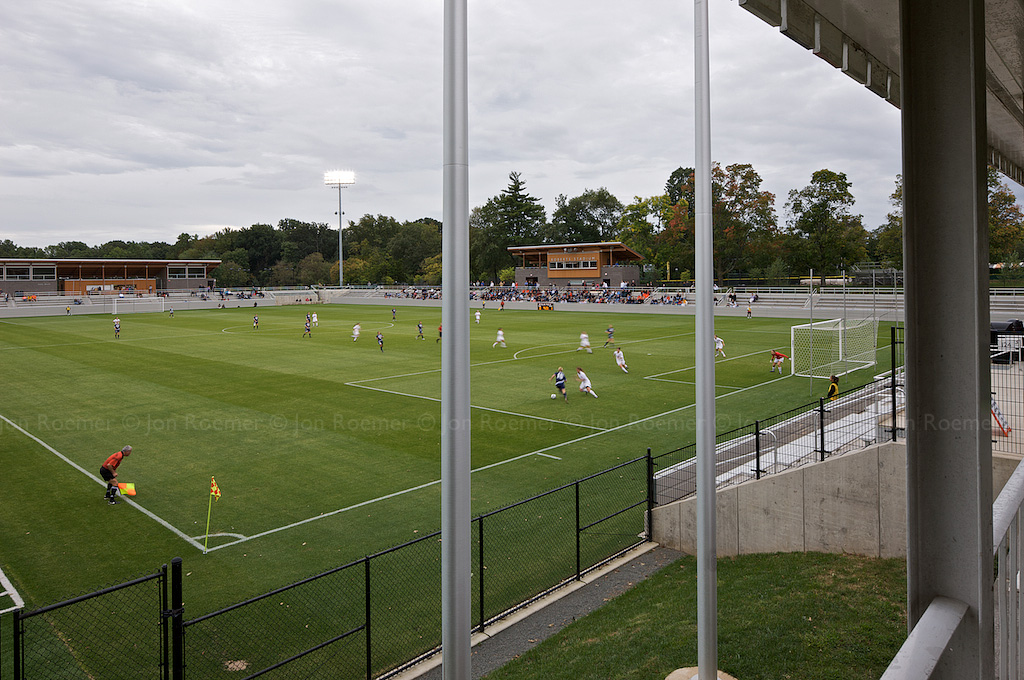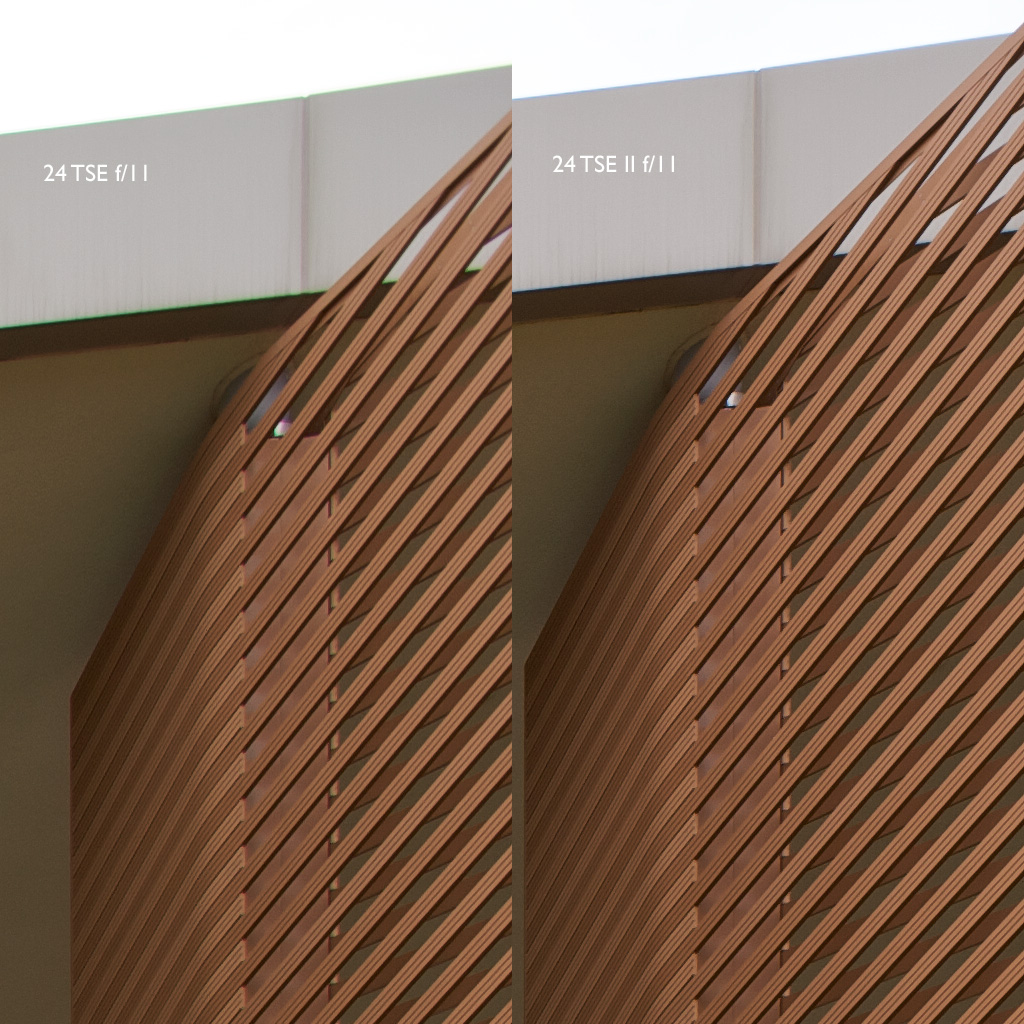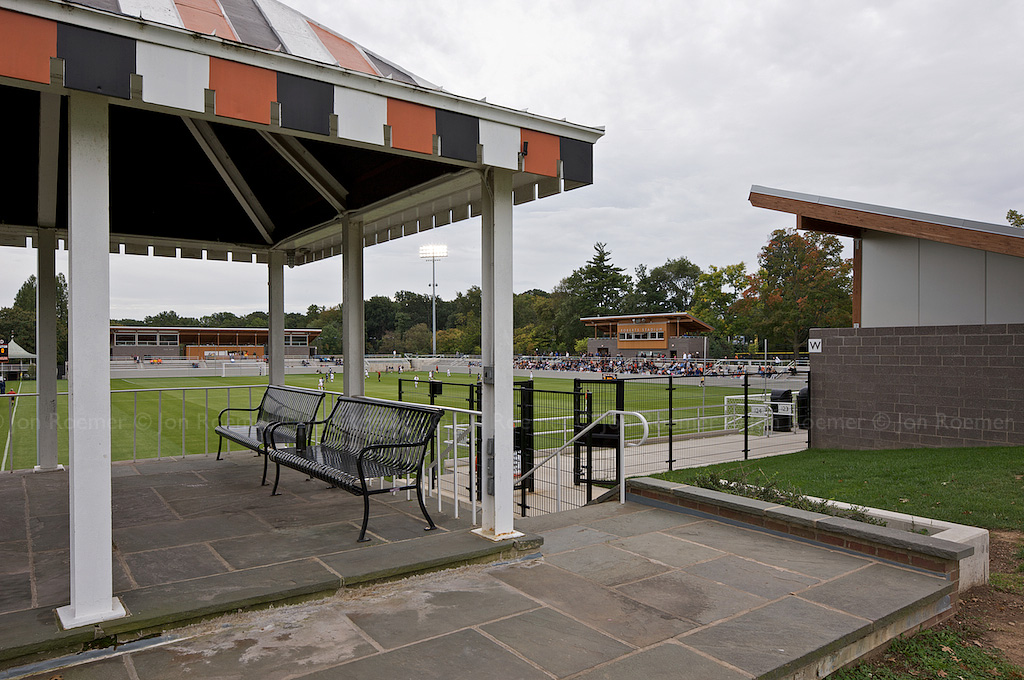This past week I was finally able to get my hands on the new Canon TS-E 24mm f/3.5L II lens. This lens is an update to Canon’s Mark I version which dates back to 1991. The earlier version, while never the sharpest lens in the bag, held up surprisingly well over the years. Where other lenses had to be shelved because the increased resolution of succeeding generations of dslr models rendered them problematic, the Mark I version of the TS-E 24mm with some extra Photoshop steps was still viable and a good counterbalance to shooting with fixed lenses and doing all of the perspective correction in Photoshop.
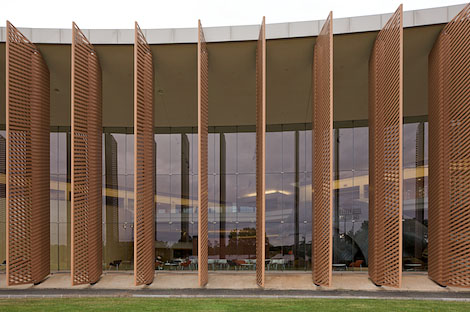
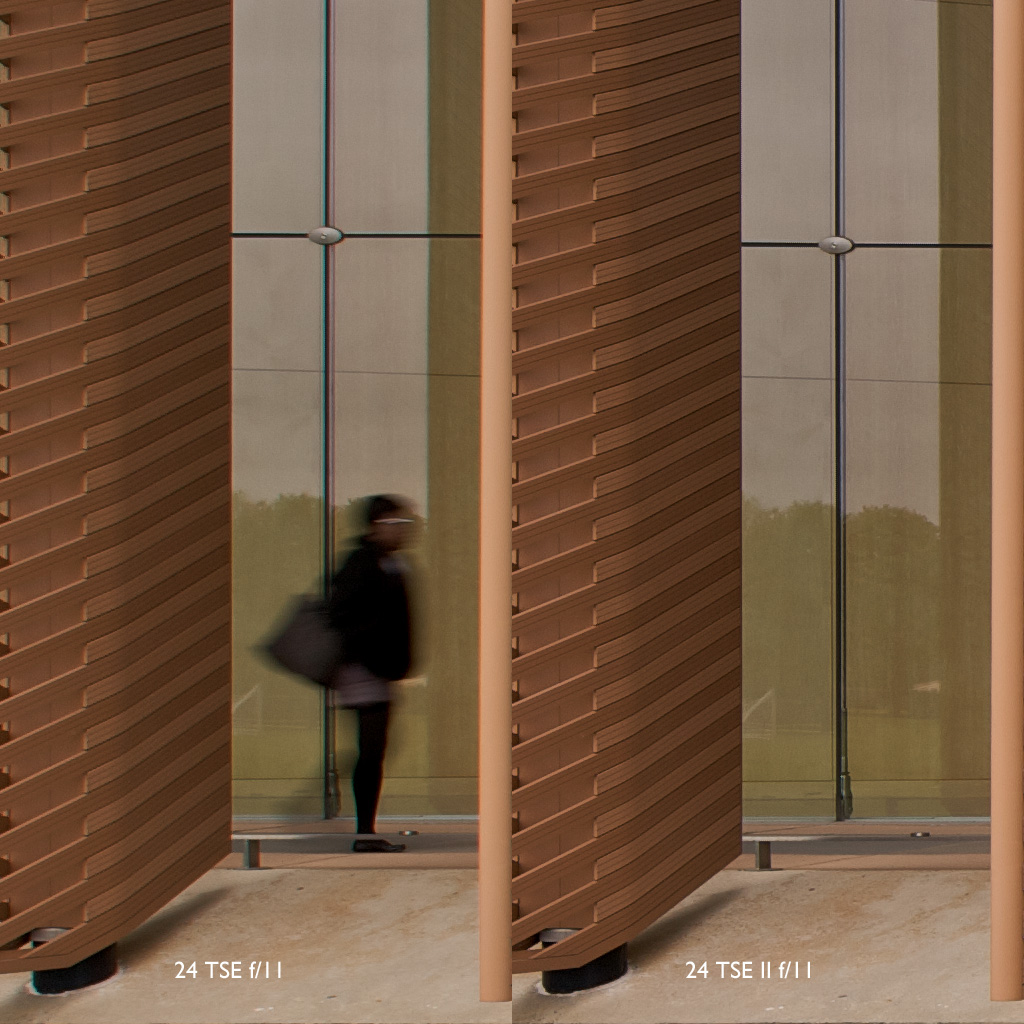
What does the new Canon TS-E 24 II bring to the table? It’s sharper, it’s optically true, and it exhibits no chromatic aberration. Using it will save a minimum of two steps in Photoshop post-production – it needs no correction for lens distortion nor does it need chromatic aberration correction. Eliminating those steps will save time and they’ll also save image quality as both steps tended to soften the image further.
Like the new TS-E 17mm, the TS-E 24mm II offers 12mm of shift. This is another improvement over the Mark I version of the lens which offered 11mm of shift but suffered image degradation if you shifted more than 7mm.
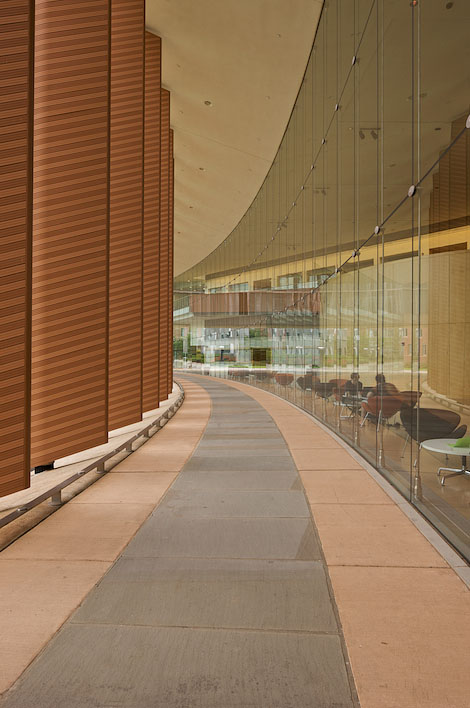
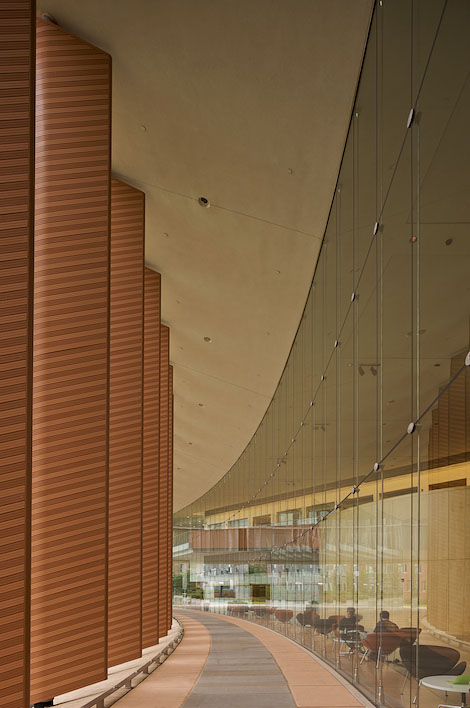
Most lenses on a 21mp’ish camera max out sharpness at f/11. Stop down more and diffraction sets in softening the image further. But when I tested the TS-E 17mm lens I found that if you wanted to hold sharpness on the outer edges when the lens is shifted you really needed to shoot at f/16. This was at the expense of softening some detail in the center of the frame but it was questionable how noticeable that would be. The TS-E 24mm II is similar but not as extreme.
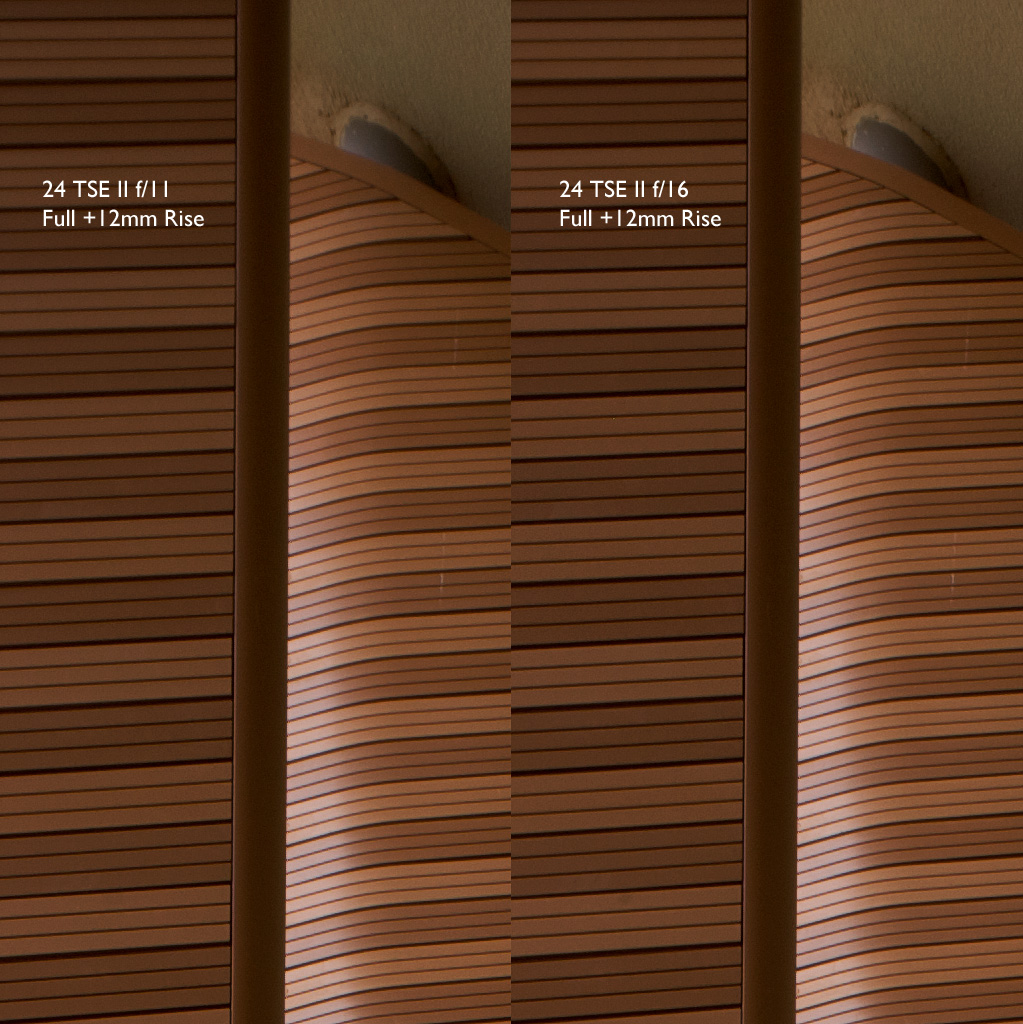
You can see that f/16 is holding the corner a bit better but this is a very small area of the frame, the difference is not huge, and some print tests are needed to confirm if f/16 over f/11 is warranted in this situation.
As mentioned above, the TS-E 24 II appears to be optically true, amazingly so, and in that sense similar to a good view camera lens. Here is a composite image made from three horizontal frames on the TS-E 24 II utilizing the full range of possible shifts (-12mm, 0mm, +12mm.)
